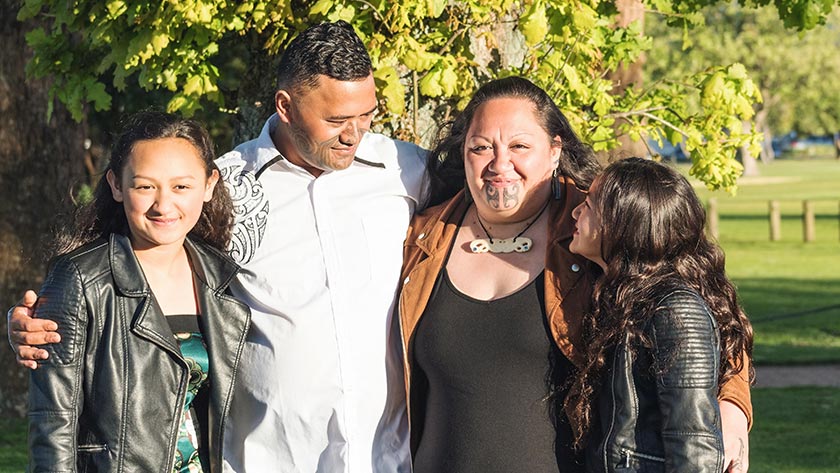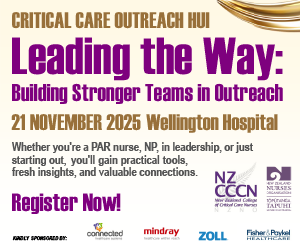The World Health Organization defines health literacy as “…the cognitive and social skills which determine the motivation and ability of individuals to gain access to, understand and use information in ways which promote and maintain good health”.1 Health literacy is more than the ability to understand a pamphlet or to attend an appointment. It empowers a person to be proactive in looking after their health, with the ability to take action and make well-informed decisions.1, 2
In an increasingly hectic health-care environment, where many options are available to the health-care consumer, they need to have the ability to understand health information to make informed decisions.3 The internet and media add to the complexity of information for people to consider, and there is increased expectation for patients to participate in decision-making about their health.3
An example of the impact of health literacy is failure to understand instructions, such as how to take a medication effectively, which can lead to hospitalisation or death.4 Therefore, limited health literacy is a determinant in outcomes such as increased hospitalisation, inadequate management of chronic conditions, increased mortality, increased health risk-taking, and inequalities in disease outcomes.4, 5 Effective health literacy interventions can help reduce health inequalities and health costs and improve health outcomes.4
Studies in the United States show around half its population lacks abilities in numeracy, reading and writing – skills required for effective navigation of the health system. People from lower socioeconomic groups and minorities were over-represented among those with inadequate literacy skills.6
Studies done in Aotearoa/New Zealand report poor health literacy skills in the majority of New Zealanders. Māori had the lowest health literacy skills, which is very likely to have a negative impact on their health.7 Research has found 75 per cent of Māori women and 80 per cent of Māori men have poor health literacy skills.8 Worldwide, those most at risk of inadequate health literacy skills are racial minorities, older people, unemployed people, prisoners, immigrants, people with chronic mental or physical conditions and people living in poverty.6
However, poor health literacy does not just affect the above groups – any patient, no matter their level of literacy and understanding, can find it challenging to understand or communicate if they are in pain or emotional distress.3
Empowering the individual
Health literacy is a tool that empowers the individual to make decisions for their health and can be achieved with effective communication and provision of information and education.2 Therefore, health literacy is partly about how effectively health-care professionals communicate health messages. Effective communication results in higher patient satisfaction, compliance with treatment, reduced costs, better health outcomes, and fewer claims of malpractice.10
Given the impact health literacy has on the health system, a large amount of research and resources about it are available worldwide, including on the New Zealand Ministry of Health website.11 A range of tests is available to assess patients’ health literary skills; however, people with low literacy could find this humiliating. Instead, asking a single question such as “how confident are you filling out medical forms by yourself?” could be considered.3 Health-care professionals should also look out for “red flags”, such as people finding excuses why they cannot fill in a form, asking others to read written materials out loud, and identifying pills by colour and shape rather than reading the label.3
The best way to establish if the patient understands the message given is to use the “teach-back” and the “show-me” techniques.10 Rather than simply asking if the patient understands, the clinician can take responsibility for getting the message across by saying they want to make sure they have explained things well and could the patient please tell them, for example, how they would take this medication.3 The show-me technique is similar, with the patient showing how they do something, eg measuring liquid medication.10
It is important to build a rapport with the patient, by showing empathy and being genuinely interested.3 A patient will be more relaxed and receptive to absorb and share information if they feel valued and heard.3 Likewise, a sense of humanity can be expressed in the tone of a brochure or in phone conversations. Similarly, the environment of a care facility affects health literacy. A building that feels inviting, is clutter-free and is easy to navigate, will affect the patient’s experience.3
Health-care professionals should also pay attention to the speed at which they speak, and remember to pause and give the patient their undivided attention.3 Ways to improve the older population’s health literacy include providing a quiet, well-lit environment with large easy-to-read signs, to speak clearly and slowly, to have written information in plain language and large font, and encourage them to ask questions and take a support person to the appointment.3 Overall, the health professional needs to invite questions by asking, for example, what the person’s questions are, instead of asking if they have any questions.3
Design of brochures
Another aspect of health literacy involves design of health brochures. The best way to find out if a brochure fits its purpose is to get it tested first by the intended users.3 The design of the brochure is important – it should be easy to read and use plain language.3 There is a lot of help available for developing health education resources, including a plain language thesaurus.12, 13
The Ministry of Health has a strong interest in improving health literacy to improve health outcomes and reduce health costs.14 It complies with legitimate requirements, such as the Code of Health and Disability Services Consumers’ Rights – especially the right to effective communication and the right to be fully informed – and to the Treaty of Waitangi.15, 16 In recognising the treaty, district health boards are required to address Māori health and improve disparities.16
Due to the Crown’s failure to honour the treaty in the years following its signing, Māori suffered a vast loss of land and loss of equity.16 Colonisation not only brought land loss, but also new diseases, and loss of culture, language and identity; lack of social and economic autonomy led to loss of self-determination.18, 19
Māori scholar Graham Hingangaroa Smith asserts that colonisation has not magically disappeared, with economic exploitation and cultural oppression shaping new forms of colonisation.21
To this day, Māori experience large disparities, not just in health but in the justice system, economy, housing, and education.20 Māori are likely to die younger than non-Māori, having higher mortality and morbidity in cardiovascular disease, most cancers, diabetes and rheumatic fever.20 And despite decades of cultural safety training in the health workforce, more needs to be done to decolonise and stop existing racism in the health system.22 Continuing inequities in health outcomes for Māori are proof the system is not working for them.20, 22
Although brochures written in te reo Māori were welcomed, participants stressed that not all Māori speak te reo and they must not be excluded.
The western concept of individualism often conflicts with Māori values such as whanaungatanga (sense of family connection).21 Western medicine also tends to concentrate on the physical aspects of the individual, while Māori usually conceptualise health more holistically.17
Indigenous health models such as Te Whare Tapa Whā,17 Te Pae Mahutonga and Te Kapunga Putohe are valuable resources to help health-care professionals work in partnership with Māori.23, 24 Health workers who embrace the opportunity to learn about Māori values and customs can use this knowledge when working with any patient and their families.16
The Hospice New Zealand Standards for Palliative Care aim to align with the principles of the treaty, collaborating with Māori to provide the best care for Māori.25 Despite nationwide efforts to meet Māori needs, there is still low uptake of palliative care services by Māori.26 The New Zealand Palliative Care Strategy found a lack of awareness among Māori about palliative care and no indigenous palliative care providers.27
The author works as a community palliative care nurse in a district health board (DHB) region where 25 per cent of the population identify as Māori. In the Eastern Bay of Plenty, Māori make up some 40 per cent of the population. Few other statistics are available for the eastern area, despite its contrast to the western district.28, 29 In the hospice’s 2019 statistics, 35 per cent of the patients identified as Māori.30
Iwi in this area have been working to develop and empower their people. Te Whare Wānanga o Awanuiārangi is providing tertiary education focused on building excellent bicultural skills.21 Ngāi Tūhoe have been proactive in self-governing, including funding their own medical centres.31 These are important changes, given the whole district’s Māori population has a mortality rate 2.3 times higher than non-Māori and an estimated avoidable mortality 2.8 times higher than non-Māori. The same statistics reveal that 87 per cent of regional stroke patients are Māori, and if aged 25 or older, Māori are 80 per cent more likely to be admitted with circulatory system diseases. According to a 2016 health profile of Māori in the Bay of Plenty DHB region, Māori are also more likely to be raised in low-income households, are more often cold, and more often postpone doctor’s visits and skip vegetables and fruit, to reduce costs. Their access to a motor vehicle is less, as is access to telecommunication: they have comparatively less telephone access and 35 per cent have no internet.28
In recent years, several surveys have been undertaken in Aotearoa/New Zealand to get a better understanding of barriers Māori experience in accessing palliative care in terms of health literacy. One study used focus groups with kaumātua and whānau to analyse brochures provided by palliative care services, and to expose cultural and comprehension issues within.26 Some of the brochures were found to use Māori symbols or words regarded as inappropriate and at times even offensive, and some showed a lack of understanding of Māori cultural values.
Positive messages
The participants welcomed Māori-themed brochures that had positive messages, showing the health provider was interested in learning about their cultural and spiritual needs. Although brochures written in te reo Māori were welcomed, participants stressed that not all Māori speak te reo and they must not be excluded. The kaumātua and whānau favoured a bilingual brochure that used Māori communication protocols and emphasised treaty principles and partnership. Some participants found the text in some brochures too long or cluttered with too many medical terms.
Although the kaumātua preferred kanohi-ki-te-kanohi (face-to-face) interactions, they agreed brochures had a place in conveying information.26 This kaumātua-led group developed three Māori communication models specific to palliative care.32
Another survey of Māori on palliative care and health literacy highlighted the effect that shock and grief had on people’s ability to understand information given by health-care professionals and what was happening to their loved one.8 This study confirmed that the emotional nature of palliative care, coupled with high physical needs, affected health literacy. Additionally, the issue of late referrals to palliative care and vague communication about the patient’s prognosis led to confusion and missed opportunities to build relationships with the palliative care provider, and less time to make necessary arrangements. Health-care professionals also found late referrals stressful.
This research discovered strategies that have been used by Māori and palliative care staff to overcome some of these challenges. These included:
- Clinicians being aware of the importance of building relationships before addressing clinical matters.
- Whānau keeping helpful information to pass onto others in a similar situation, or keeping all health-related information in one folder to aid communication with health staff.
- The internet was found to be a helpful resource for whānau, including looking up unknown words.
- Effective, open and honest communication and plain speech were key for patients’ and whānau’s satisfaction with the service.
- Also important was the use of a “communication book”, though there was some confusion about how to use it, due to lack of explanation.
Participants gave some negative feedback on written resources. Formal language with lack of friendly tone, unfamiliar vocabulary, lack of line spacing and lengthy texts made some resources difficult to understand.
Consent to care forms were seen as particularly hard to understand and there was feedback on the large amount of information handed out at the entry to the palliative care service. There was doubt that the information was read by a majority. Interestingly, the effectiveness of this written information was directly linked to the quality of relationship whānau had with the provider.8, 19
As a result of the combined findings of these two studies,8, 26 the Ministry of Health published a document on palliative care and Māori from a health literacy perspective.33 One recommendation was for palliative-care organisations to provide electronic resources under guidance, while ensuring such resources would not increase inequalities.
Recommendations
Recommendations from the kaumātua-led group were firstly to improve organisational and health professionals’ knowledge and application of cultural health literacy. They also wanted cultural and clinical supervision for health staff, and designing of effective brochures. They further recommended measures to increase Māori awareness of palliative services, ideally with input from local iwi in hosting events that provide information about palliative care kanohi-ki-te-kanohi.32 There is a consensus amongst participants of various studies that local iwi feedback should be sought before the distribution of brochures.8, 19, 26, 32
Health literacy is an important determinant in health outcomes such as hospitalisation, mortality rates, health costs and empowerment of the individual. Studies on Māori patients and whānau experiences in terms of palliative care and health literacy provide health professionals and policy writers with valuable information for transformation of this field. Health literacy plays an important part in increasing equity, including in the context of palliative care.
Acknowledgement: This article is adapted from an assignment written for an “education for clinical practice” course, taught by Louise Carrucan-Wood, professional teaching fellow in the School of Nursing, University of Auckland.
Deborah Crossan, RN, PGCert(hlthsci pall care), PGDip(hlthsci adv nurs) is a palliative care nurse at Hospice Eastern Bay of Plenty, Whakatane.
References
- Nutbeam, D. (1998). Health promotion glossary. Health Promotion International, 13(4), 349-364.
- Nutbeam, D., McGill, B., & Premkumar, P. (2018). Improving health literacy in community populations: A review of progress. Health Promotion International, 33(5), 901-911.
- Osborne, H. (2018). Health literacy from A to Z (2nd ed.) Aviva Publishing.
- Batterham, R. W., Buchbinder, R., Beauchamp, A., Dodson, S., Elsworth, G. R., & Osborne, R. H. (2014). The OPtimising HEalth LIterAcy (Ophelia) process: study protocol for using health literacy profiling and community engagement to create and implement health reform. BMC Public Health, 14(1), 1-10.
- Manchester, A. (2018). Health as a human right. Kai Tiaki Nursing New Zealand, 24(3), 2-13.
- Bastable, S. B., & Myers, G. M. (2017). Literacy in the adult patient population. In S. B. Bastable (Ed.), Essentials of patient education (2nd ed., pp. 187-231). Jones & Bartlett.
- Ministry of Health. (2010). Kōrero mārama: Health literacy and Māori.
- Kidd, J., Reid, S., Collins, N., Gibbons, V., Black, S., Blundell, R., Peni, T., & Ahu, M. (2014). Kia mau te kahu whakamauru: Health literacy in palliative care. Auckland, New Zealand: Ministry of Health, Health Research Council.
- Browne, M. O., Wells, J., & Scott, K. (eds). (2006). Te Rau Hinengaro: The New Zealand Mental Health Survey. Wellington: Ministry of Health.
- Connelly, R. A., & Turner, T. (2017). Health literacy and child health outcomes promoting effective health communication strategies to improve quality of care. Springer Nature.
- Ministry of Health. (2015b). Health literacy.
- Ministry of Health. (2012). Rauemi atawhai: A guide to developing health education resources in New Zealand (PDF, 2.3 MB).
- National Center for Health Marketing. (2007). Plain language thesaurus for health communication (PDF, 2.3 MB).
- Ministry of Health. (2015a). A framework for health literacy.
- Ministry of Health. (1996). Code of health and disability services consumers’ rights.
- Medical Council of New Zealand. (2019). He Ara Hauora Māori: A Pathway to Māori Health Equity (PDF, 76kb).
- Rochford, T. (2004). Whare tapa whā: A Māori model of a unified theory of health. Journal of Primary Prevention, 25(1), 41-57.
- Tangihaere, T. M., & Twiname, L. (2011). Providing space for indigenous knowledge. Journal of Management Education, 35(1), 102-118.
- Kidd, J., Black, S., Blundell, R., & Peni, T. (2018). Cultural health literacy: The experiences of Māori in palliative care. Global Health Promotion, 25(4), 15-23.
- Barton, P. (2018). The elephant in the room – nursing and Māori health disparities. Kai Tiaki: Nursing New Zealand, 24(4), 17-43.
- Smith, G. H. (2015). Chapter 3 equity as critical praxis: The self-development of Te Whare Wānanga o Awanuiārangi. In Michael A. Peters, & Tina Besley (Eds.), Paolo Freire: The Global Legacy (pp. 55-77). Peter Lang Inc.
- Roberts, J. (2019). Kawa whakaruruhau – has its intent been lost? Kai Tiaki Nursing New Zealand, 25(11), 14-15.
- Durie, M. (2004). An indigenous model of health promotion. Health Promotion Journal of Australia, 15(3), 181-185.
- Barton, P., & Wilson, D. (2008). Te kapunga putohe (the restless hands): A Māori centred nursing practice model. Nursing Praxis in New Zealand, 24(2), 6-15.
- Hospice New Zealand. (2019). The standards for palliative care 2019.
- Simpson, M. L., Berryman, K., Oetzel, J., Iti, T., & Reddy, R. (2015). A cultural analysis of New Zealand palliative care brochures. Health Promotion International, 31(4), 839-848.
- Ministry of Health. (2001). The New Zealand palliative care strategy (PDF, 502 KB).
- Robson, B., Purdie, G., Simmonds, S., Waa, A., Rameka, R., Andrewes, J. (2016). Tiro whānui: Bay of Plenty District Health Board Māori health profile 2015 at a glance (PDF, 976 KB).
- Whakatane.info. (2016). About our district.
- Hospice Eastern Bay of Plenty. (2019). Annual report.
- Ngāi Tūhoe. (2020). Tūhoe.
- Ministry of Health. (2014a). Māori health literacy and communication in palliative care: Kaumātua-led models (PDF, 2.8 MB).
- Ministry of Health. (2014b). Palliative care and Māori from a health literacy perspective.





